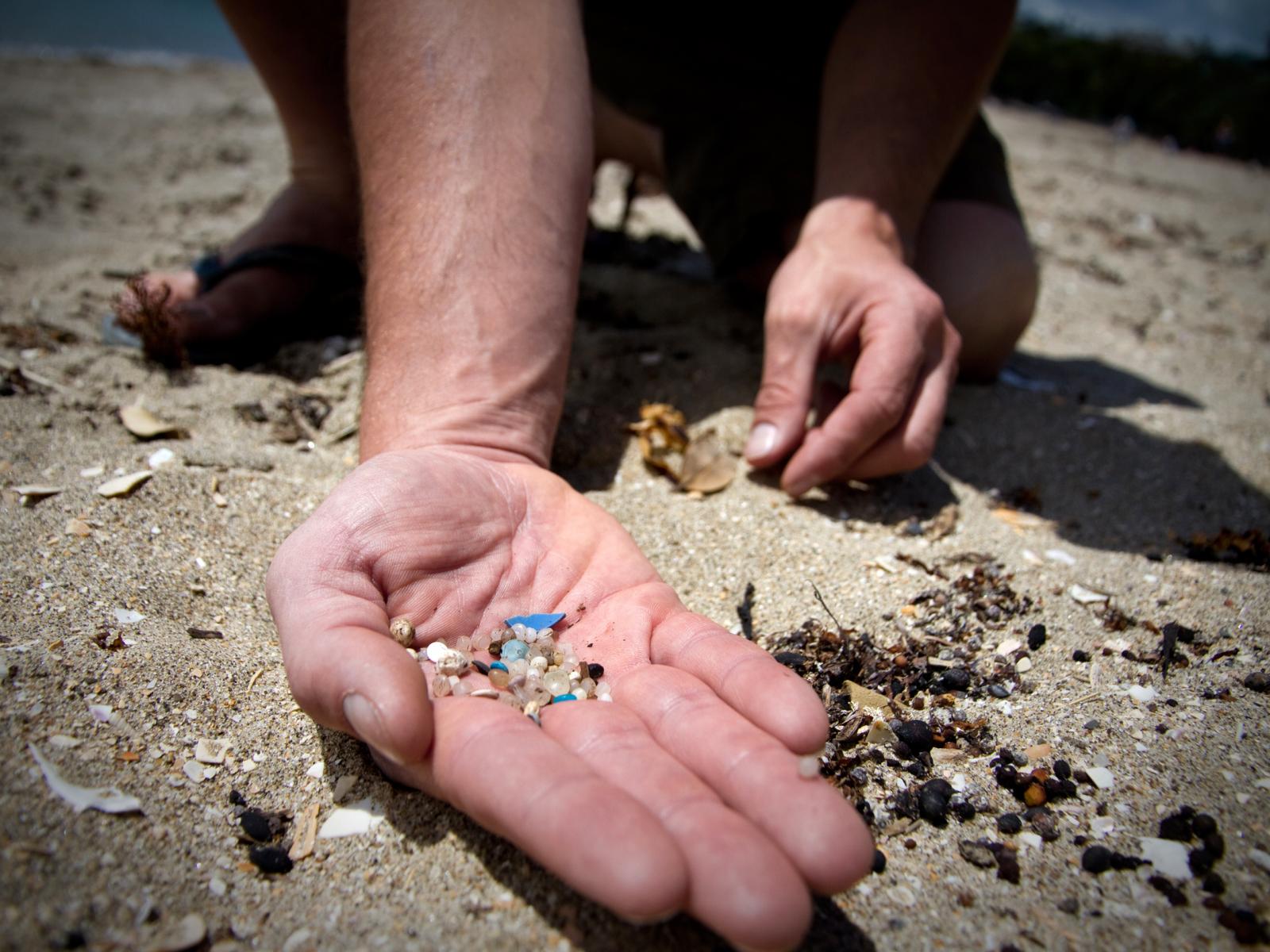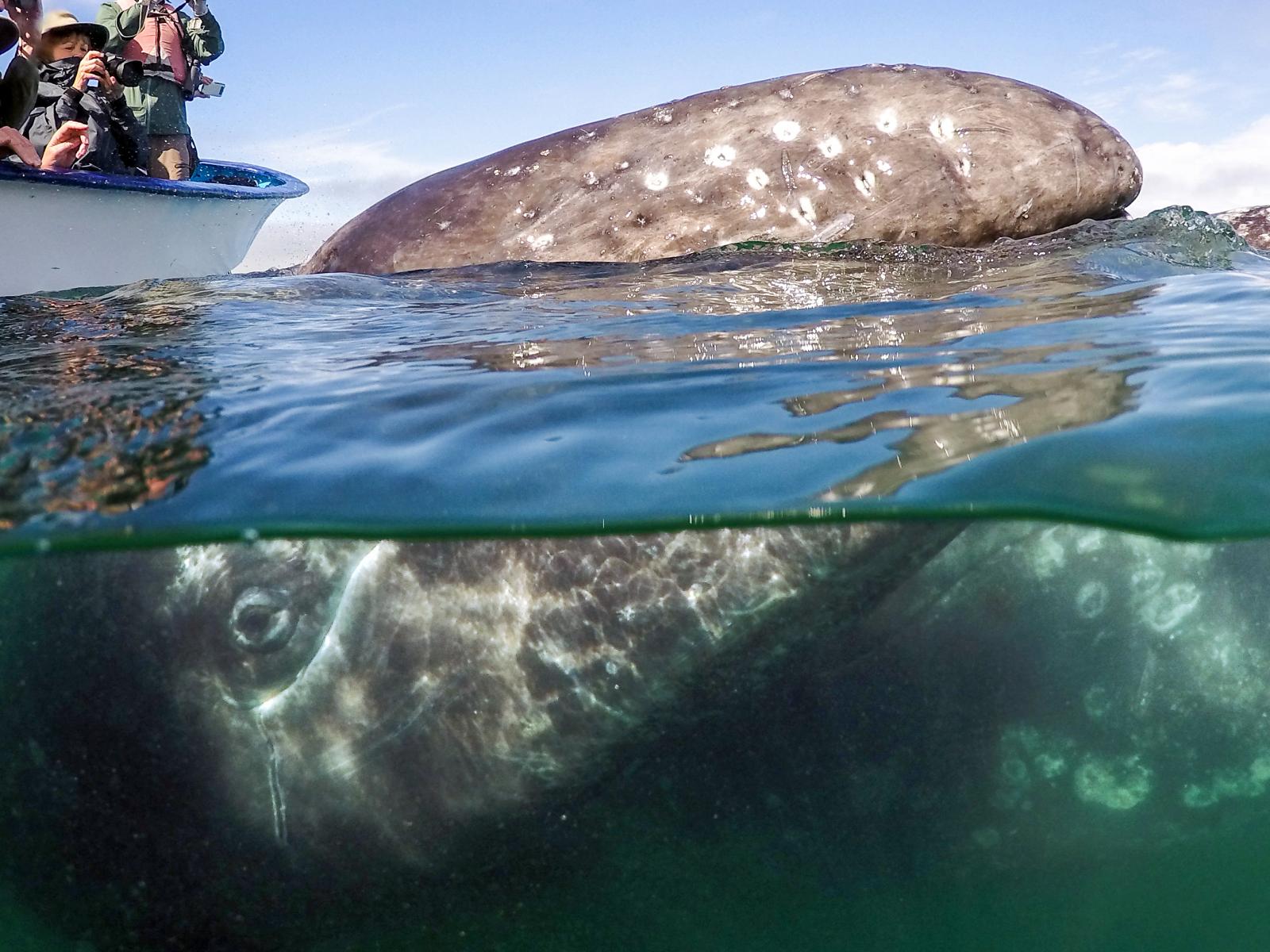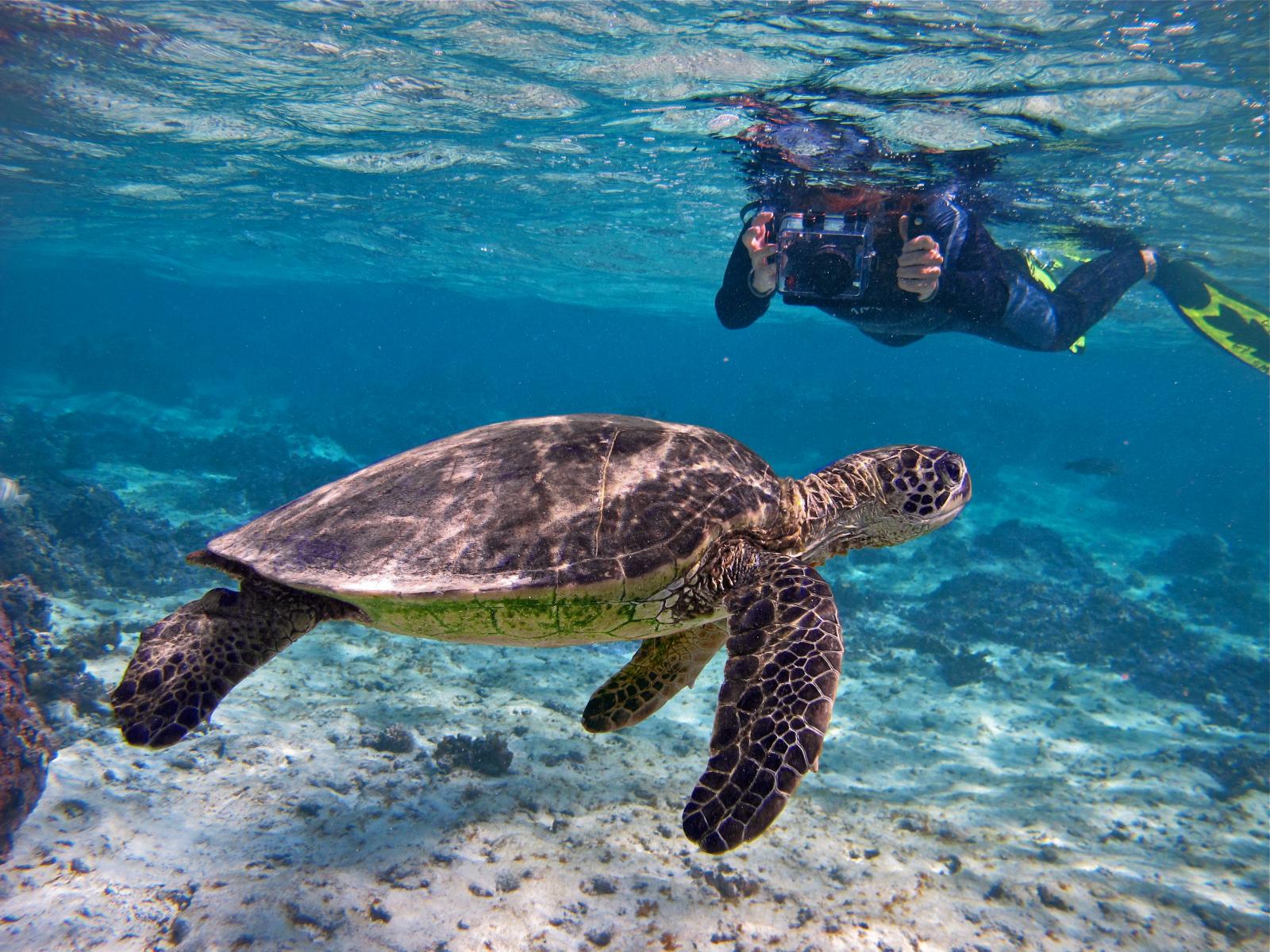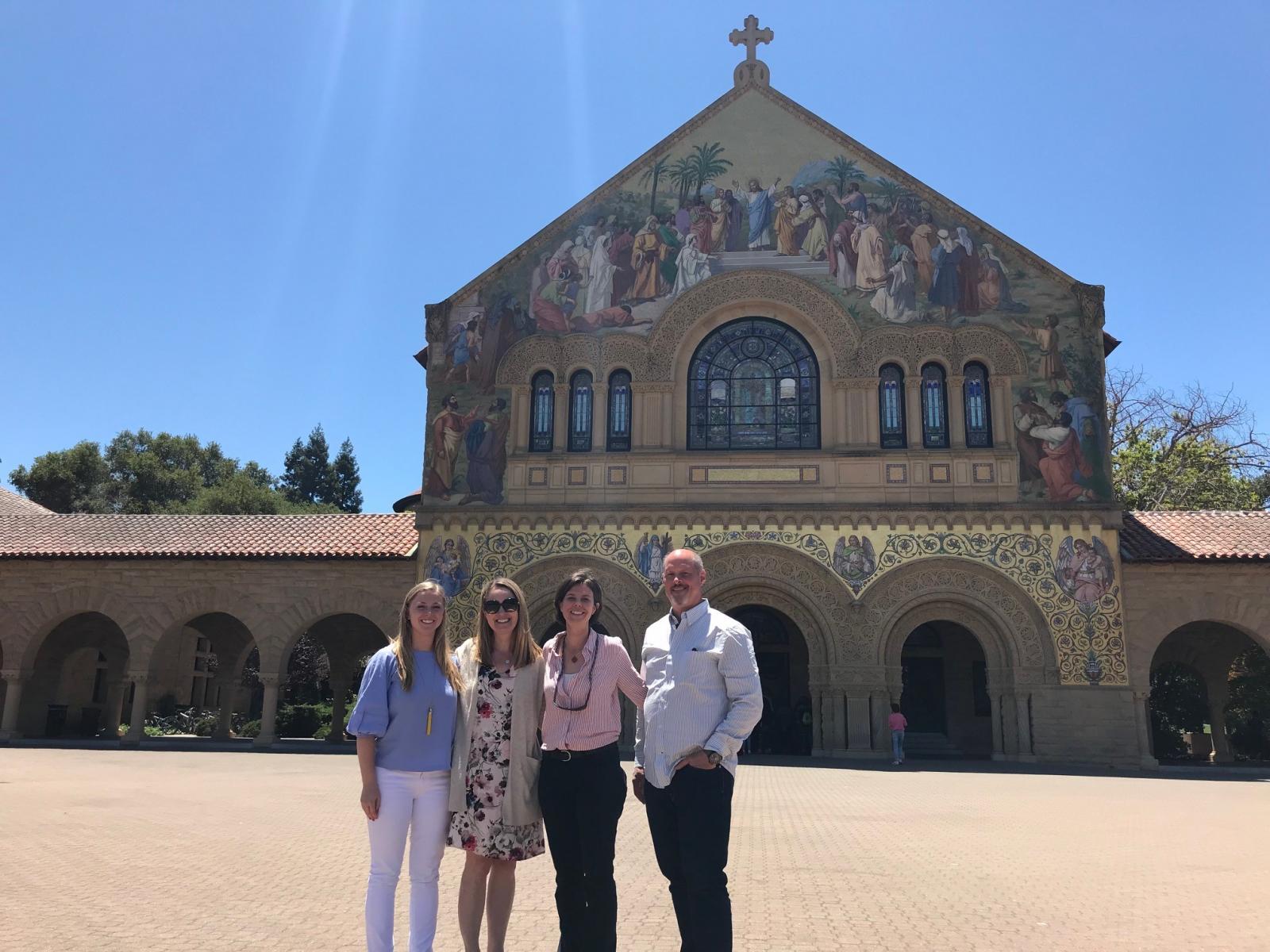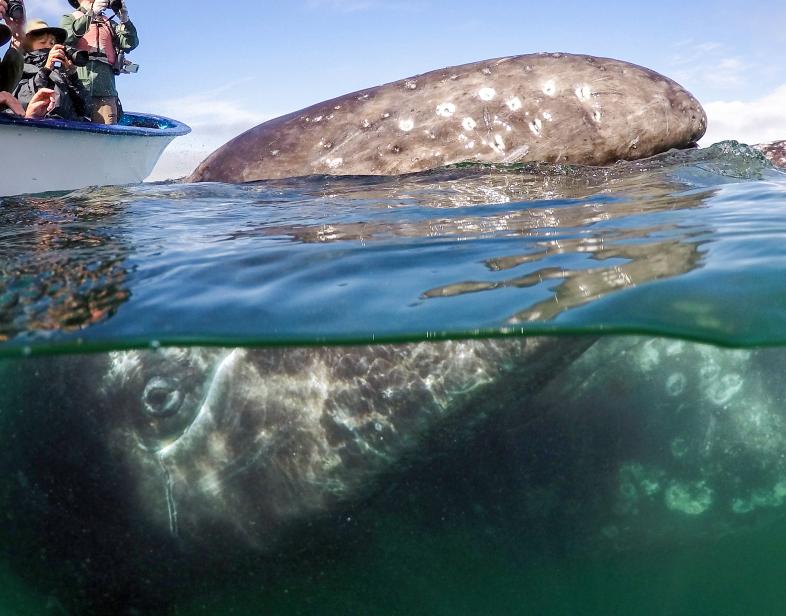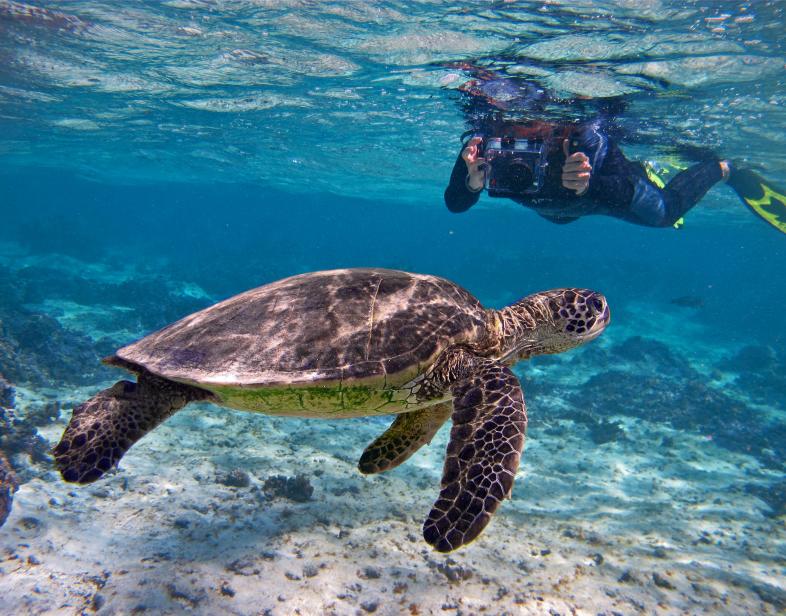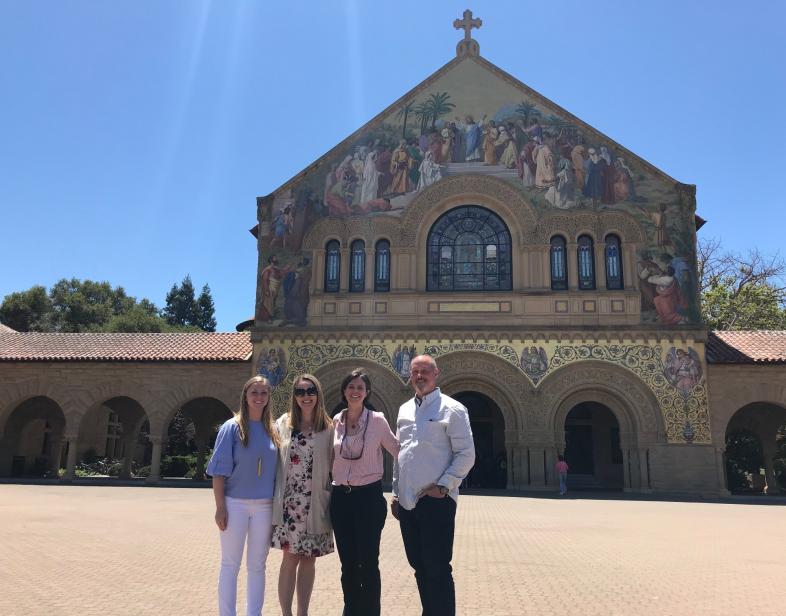An Overview Of Our Solution
At Oceanic Society, we work to improve ocean health by deepening the connection between people and nature to address the root cause of its decline: human behavior. In partnership with Stanford University, we've launched an innovative Blue Habits program that will develop and test tools that deliver measurable pro-ocean behavioral outcomes to a variety of audiences. Blue Habits is grounded in behavioral sciences, and draws on social science research, design, and technology to create systems that can change individual behaviors.
Our audience is the nature-based tourism industry, a powerful and vastly underused platform for motivating pro-ocean behavior change. Our goal is to innovate, test, and refine a scalable approach to behavior change among nature-based tourists and to promote its adoption by travel operators worldwide, thereby engaging millions of people.
- Population Impacted: 3,500 O.S. travelers (per year) initially
- Continent: North America
Context Analysis
The oceans are in trouble worldwide. 90% of fisheries are fully fished/overfished; stocks of large fish like tuna and swordfish have declined by 90% since 1950; climate change is bleaching coral reefs worldwide; and millions of tons of plastic are polluting seas.
The nature-based tourism industry is a powerful and underused platform to harness essential global scale behavior change. As one of the world's largest industries, tourism contributes $7.6 trillion annually to global GDP, employs 292 million people, and drives 1.2 billion international arrivals per year. Nature-based tourism is one of the fastest growing segments of the industry, capturing 25% of the global market.
Blue Habits aims to harness the power of this industry by developing science-based solutions that help tourism providers effectively motivate individual behavior changes by travelers, and beyond, thus “moving the needle” in ways that measurably improve ocean health and reduce the hazards humans pose to oceans.
Describe the technical solution you wanted the target audience to adopt
Blue Habits will use a design-thinking methodology facilitated by experts at Stanford’s d.school to brainstorm, prototype, test, and refine tools to motivate pro-ocean behavioral outcomes through nature-based tourism. Behavior interventions will take place before, during, and after nature-based tourism experiences, and will include: naturalist presentations, email communications, text messaging, print materials, a web portal / mobile application, and others.
Our goal is to measurably influence traveler and operator behaviors related to pollution, climate change, and fisheries & aquaculture. Among travelers, solutions will focus on simple, everyday behaviors such as limiting meat consumption, reducing home energy usage, reducing personal emissions from vehicle use, sharing environmental messages, etc. Among travel operators, solutions will focus on business decisions such as serving less meat and dairy, reducing facility energy usage, and reducing transportation emissions.
Type of intervention
Describe your behavioral intervention
Blue Habits aims to motivate and activate pro-ocean behavior, and build a pro-ocean community to address major threats to ocean health in three areas where we feel we can have the most impact and leverage:
Pollution (Plastic & Toxins): reduce marine pollution from plastics, harmful chemicals found in sunscreen, and other pollutants, by travelers and tourism providers.
Climate Change (Carbon Footprint): reduce greenhouse gas emissions by measurably altering the behavior of our travelers, tourism operators, and beyond, with an emphasis on household behaviors related to transportation (which account for roughly 20% of global carbon emissions) and both household and travel industry meat consumption (livestock account for roughly 15% of global greenhouse gas emissions).
Sustainable Fisheries & Aquaculture (Seafood Choices): positively impact seafood choices made by travelers as well as seafood purchasing decisions made by members of the tourism industry to shift away from unsustainable fisheries in favor of well-managed, sustainable seafood choices.
Behavior outcomes will be monitored initially using traveler surveys as we test various tools and techniques. As we hone in on an effective approach, we will build out additional tools to support that approach (through social incentives, reminders/triggers, etc.) and monitor its effectiveness over time, which is likely to include a web / mobile application to facilitates automation and scalability of the approach.
As needed, please explain the type of intervention in more detail
N/A
Describe your implementation
In 2016, Stanford University and O.S. successfully completed an initial research phase of Blue Habits that evaluated the potential of O.S.'s whale watching cruises to motivate lasting pro-ocean behavior. Researchers found that the tours were successful in educating and engaging participants, and visitors reported learning a great deal about marine wildlife. However, visitors only slightly agreed that they gained a better understanding of marine conservation issues or that they felt more strongly about marine conservation issues. Participants also reported no change in a variety of environmental behaviors as measured before and following the tour.
Building on results and lessons learned from Phase 1, in Phase 2 of Blue Habits, we are deepening our partnership with Stanford to develop, test, and refine tools that can be applied by nature-based tourism operators worldwide.
We will convene a design-thinking workshop led by experts from Stanford’s acclaimed d.school where conservation, tech, and tourism stakeholders will collaborate on multi-stakeholder teams to address ocean conservation challenges as a design-and-innovation problem. Groups will be tasked to define problems and to rapidly develop solutions based on real-time feedback using a process that emphasizes ideation, brainstorming, prototyping, testing and adaptation. The workshop will further clarify target behaviors within three themes (pollution, climate change, and sustainable fisheries), and determine how to incorporate and test behavior change across all stages of O.S.’s travel programs. The most effective approaches and tools will be piloted on O.S.’s San Francisco whale watching tours, which serve nearly 3,000 travelers per year. Their efficacy will be monitored by Stanford researchers through observational data and pre- and post-tour surveys, and those data will be analyzed to identify key success factors, enabling conditions, and obstacles in order to inform future iteration of our approaches.
External connections
Our primary collaborators for the research component of the Blue Habits program are Dr. Nicole Ardoin and Dr. Mele Wheaton from Stanford University's Graduate School of Education and Woods Institute for the Environment. Drs. Ardoin and Wheaton have extensive backgrounds in nature-based tourism, informal education programs, and behavior change through nature-based travel. They will also engage a variety of collaborators from within Stanford including undergraduate and graduate students, post-docs, design experts, and professors.
Oceanic Society will also rely on our pool of naturalists with extensive experience in nature-based travel and interpretation to participate in designing and testing behavior interventions.
Moreover, as leaders of international nature expeditions worldwide for nearly 50 years, Oceanic Society has a broad network of travel partners worldwide whom we aim to engage in testing and implementing Blue Habits approaches. By working with tourism operators worldwide to disseminate shareable lessons, resources, and demonstrate the business case for Blue Habits across the industry, we expect Blue Habits to help advance and support other socioeconomic benefits derived from tourism.
Who adopted the desired behaviors and to what degree?
Data collected on the 400+ visitors surveyed in Phase 1 of Blue Habits demonstrated that Oceanic Society's whale-watching tours were, overall, very successful in educating and engaging participants. Viewing and learning about wildlife was consistently visitors' favorite part of the tour and what they most frequently shared with others in their personal networks. Visitors reported learning a great deal about marine wildlife.
While Phase 1 did not generate long-term pro-environmental behaviors, demographics collected on the travelers will be very useful in Phase 2. For example, our research highlighted that nature-based travelers tend to be relatively affluent, mature, and environmentally focused, characteristics that make them (a) among the most significant consumers of natural resources and emitters of greenhouse gases (directly and indirectly), and (b) relatively receptive to pro-environmental messaging.
How did you impact natural resource use and greenhouse gas emissions?
A complete list of Blue Habits target behaviors and associated metrics will be developed using a design-thinking methodology in collaboration with Stanford’s School of Design (d.school). Examples of metrics are: [reduction in] use of single use plastics; trash cleaned from coasts/oceans/waterways; [reduction in] use of harmful sunscreen near reefs; [decreased] consumption of unsustainable seafood; [increased] consumption of sustainable seafood; [reduced] carbon/greenhouse gas emissions from: a) transportation, b) home energy, and c) meat consumption.
What were some of the resulting co-benefits?
Some benefits derived from the Blue Habits program will include: (1) A deeper understanding of the motivations; knowledge base; environmental values and attitudes; and environmental behaviors of our participants; (2) Positive and measurable impacts to global ocean conservation through the behavior of our clientele (e.g., improved and more knowledgeable seafood choices, reduced plastic consumption and disposal, increased conservation-related philanthropy); (3) A foundation for future efforts to target behavior change throughout Oceanic Society’s travel programs and digital media engagement efforts; (4) Publicly available documentation reporting on our methods and results ways that are transferrable to other tour operators; and (5) The opportunity to demonstrate to the sustainable travel community that nature-based tourism has untapped conservation value beyond the tour itself.
Sustainability
Beyond behavior outcomes, Blue Habits aims to add value to the tourism industry by generating improved client engagement, positive brand associations, and other benefits, and will therefore be self-funded by market-based revenue in the long-term. We are developing: (1) a Blue Habits “playbook” that highlights research, shareable lessons, resources, and content for nature-based travel operators and the wider tourism community; and (2) conducting research that explains, supports, and demonstrates the business case for Blue Habits among tourism operators (e.g., how Blue Habits can add value to a company’s existing business model). In the short term, Blue Habits relies on grant funding to support research, development, and testing.
Return on investment
The first phase of Blue Habits cost $250,000. Our budget for the current phase of Blue Habits is $2.6 million over three years.
How could we successfully replicate this solution elsewhere?
Our goal is to create a method and set of tools that can be broadly used across the nature-based tourism industry by a wide range of operators. Improvements in environmental knowledge, interest, motivation, and pro-environmental behavioral outcomes have been successfully achieved through nature-based tourism (e.g. Powell, 2005; Powell & Ham, 2008; Ardoin et al., 2016), but a unified, scalable approach that works across nature-based tourism programs has not yet been developed.
Our three-year budget of $2.6 million includes naturalist training workshops, development of a technology platform that supports scalability, development of communications materials and the aforementioned “business case” and “playbook,” travel, and other costs that we believe are needed to effectively replicate and scale our solution.
